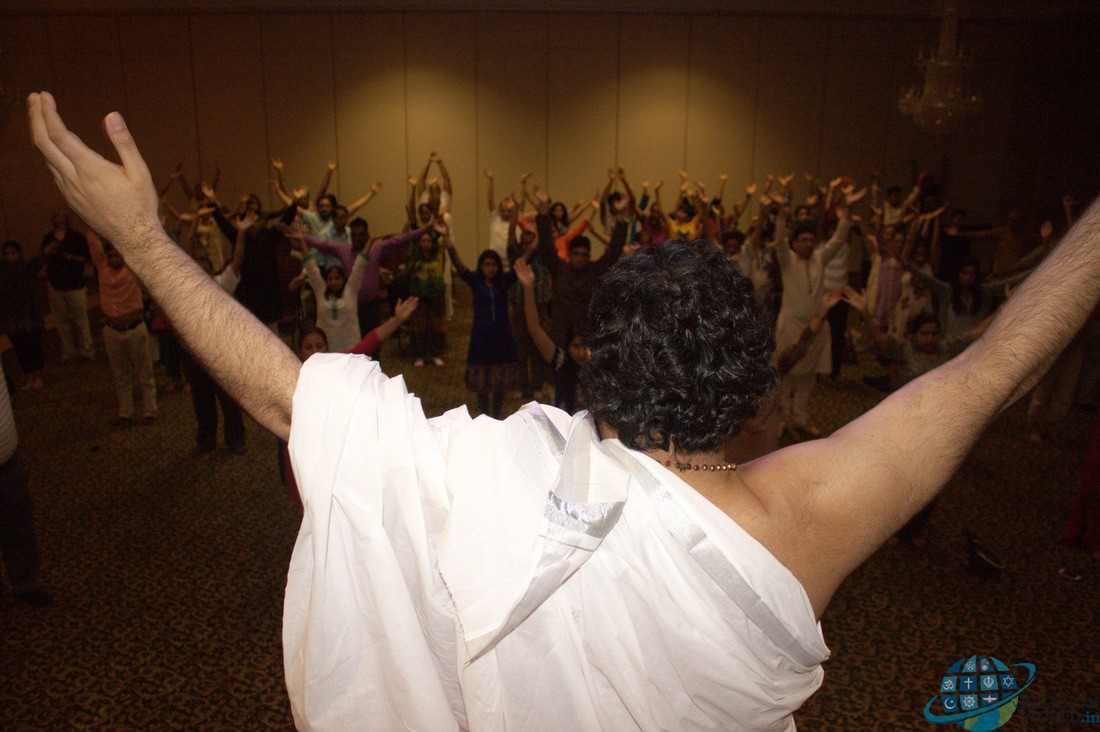How to Sit In Meditation – Meditation Postures
By Swami Dipanakr

People who are new to meditation can look at images of meditating people and fear that they are not able to strike the right meditation posture. There is no need to worry whether the posture is right or not. Much as there is what can be referred to as the universal meditation posture, there are countless variations that all succeed in calming the mind and bringing peace.
Understand the Basics
The key to the posture one adopts during meditation is not to strike the perfect posture but to be comfortable. The meditators who seem perfect and relaxed in postures that appear difficult to achieve have taken time practicing before they became masters. Be ready to practice and be patient because that takes time.
Physical Fitness
A sedentary lifestyle makes the body stiff and out of shape. To get back in shape in order to strike the right meditation postures requires improving the physical fitness through regular exercises and stretching. Stiffness of the hip area and lower back is normal when one is starting out in meditation.
It is not necessary to force things. Exercises that strengthen the lower back and mobilize the hip socket are important for people who want to fit meditation into their regular schedules. One gets better with exercise and practice.
Meditation and Pain
Discomfort and some level of pain are normal initially but they get better as the level of fitness improves. Mastering the right meditation postures takes time and effort.
Meditation restores overall balance that has been disrupted by the modern day hectic lifestyle. Practiced regularly, it helps to achieve a clear and serene mind.
Pain is a physical sensation and it is not equal to suffering, which is the mental interpretation one associates with that sensation. Meditation helps one not to associate pain with negative emotions, to learn to ignore the pain and simply observe it the same way a person observes breath without attaching any meaning to it.
Contrary to what some believe, one can do meditation effectively while sitting in a chair or on a meditation bench. The key is to adopt the correct posture, maintaining a straight back rather that reclining as is natural with most seats.
Meditation Accessories
Meditation is normally done while sitting on a rug on the floor. To be adequately raised to a point that the back is well supported and upright to avoid back pain, a cushion or pillow is necessary.
A number of cushions are used and as happens with the posture, getting the right cushions to use for meditation takes time and practice. Besides the main cushion that is used as a seat, extra cushions are needed to support the weight of the knees in order to protect against fatigue and soreness of the hips.
The normal bed pillows or seat cushions are unlikely to be effective as meditation cushions. It is advisable to invest in formal meditation cushions. There are rectangular, round and butterfly-shaped meditation cushions.
A rolled towel or folded blanket can substitute some of the cushions.
Easy Pose
This is the traditional meditation posture, sitting cross legged on a cushion with the back straight. The hands are placed on the thighs with palms facing either up or down.
The Burmese Pose
This meditation posture is comfortable for beginners. If sitting cross legged is not comfortable yet, just sit with legs in a relaxed position on the floor, one leg ahead of the other.
The Lotus
This starts with the quarter lotus which is a pose that involves sitting with the legs loosely crossed such that each foot is below the opposite knee. This graduates to the half lotus by having one foot raised to rest on top of the opposite thigh.
The full lotus is popular with experienced meditators. Both feet are raised to rest on top of the opposite thighs, with the foot facing upwards. It takes some practice to attain this posture and more practice to maintain this posture throughout a meditation session.
Don’t Fall Asleep During Meditation
It is important to remain wakeful while meditating so closing the eyes should be avoided. Keep the eyes open but avoid allowing them to wander as that will be an unnecessary distraction. Keep them focused on one point, such as the tip of your nose or a spot on the floor right ahead of you. The key is to learn to focus the mind.
It is possible to meditate while lying down but care must be taken not to fall asleep.
Remember the adage practice makes perfect. Things might not be too comfortable at the beginning but the more you practice the better the results.
Courtesy – http://www.swamidipankar.guru
Religion World is one and only indian website to give information of all religions. We are dedicated to present the religions. You can send any info, news, engagements and advice to us on – religionworldin@gmail.com – or you can WhatsApp on – 9717000666 – we are also on Twitter, Facebook and Youtube.









